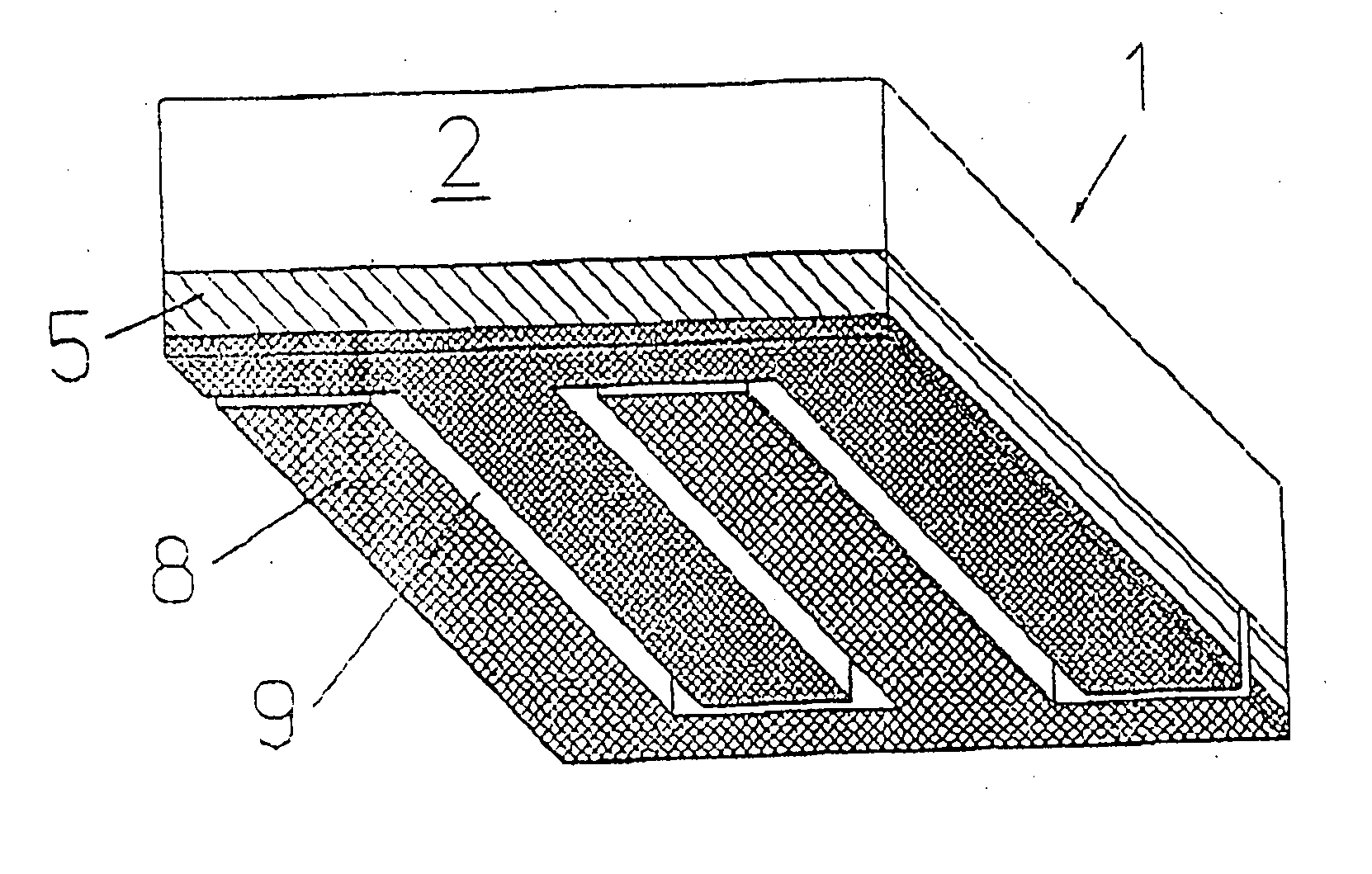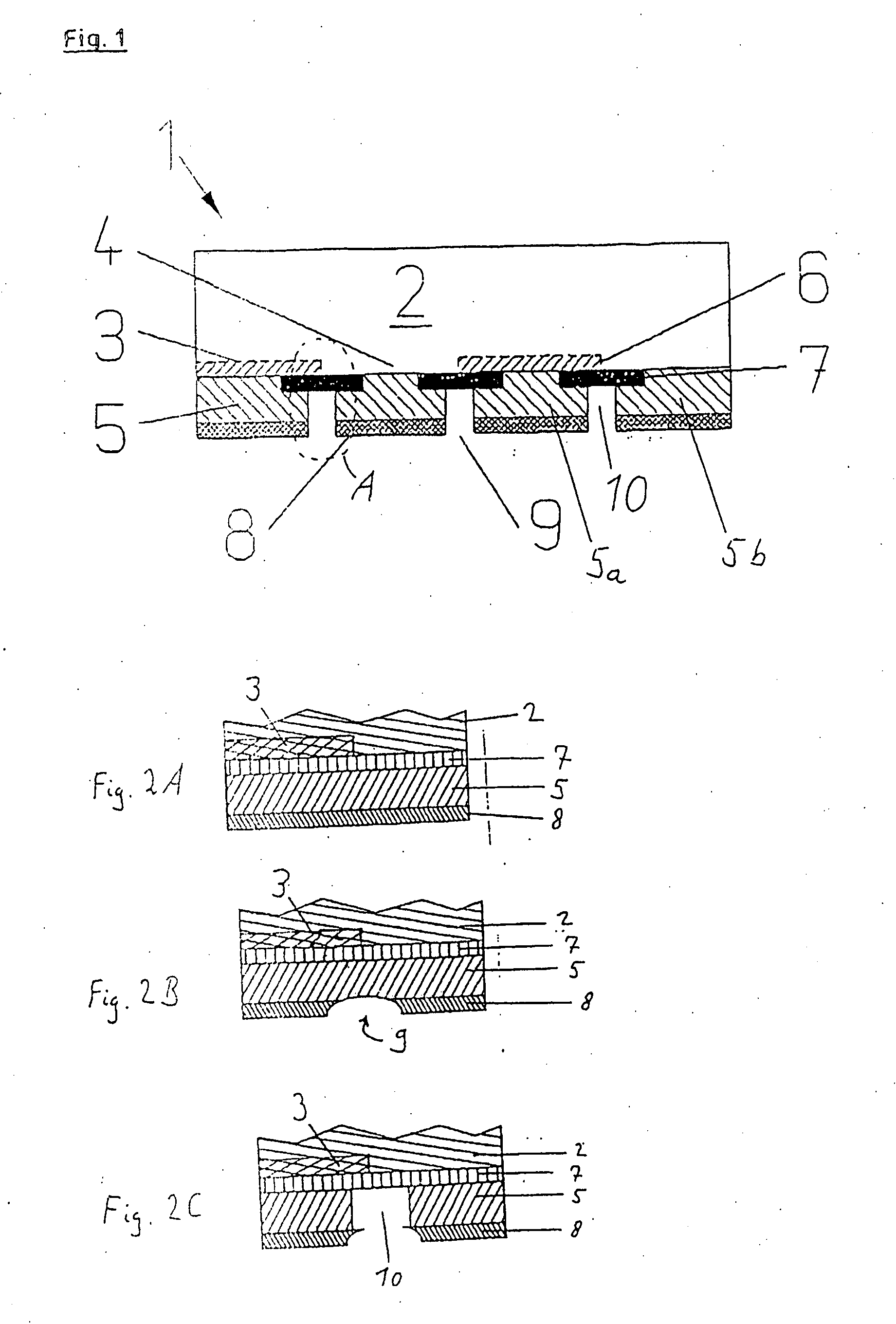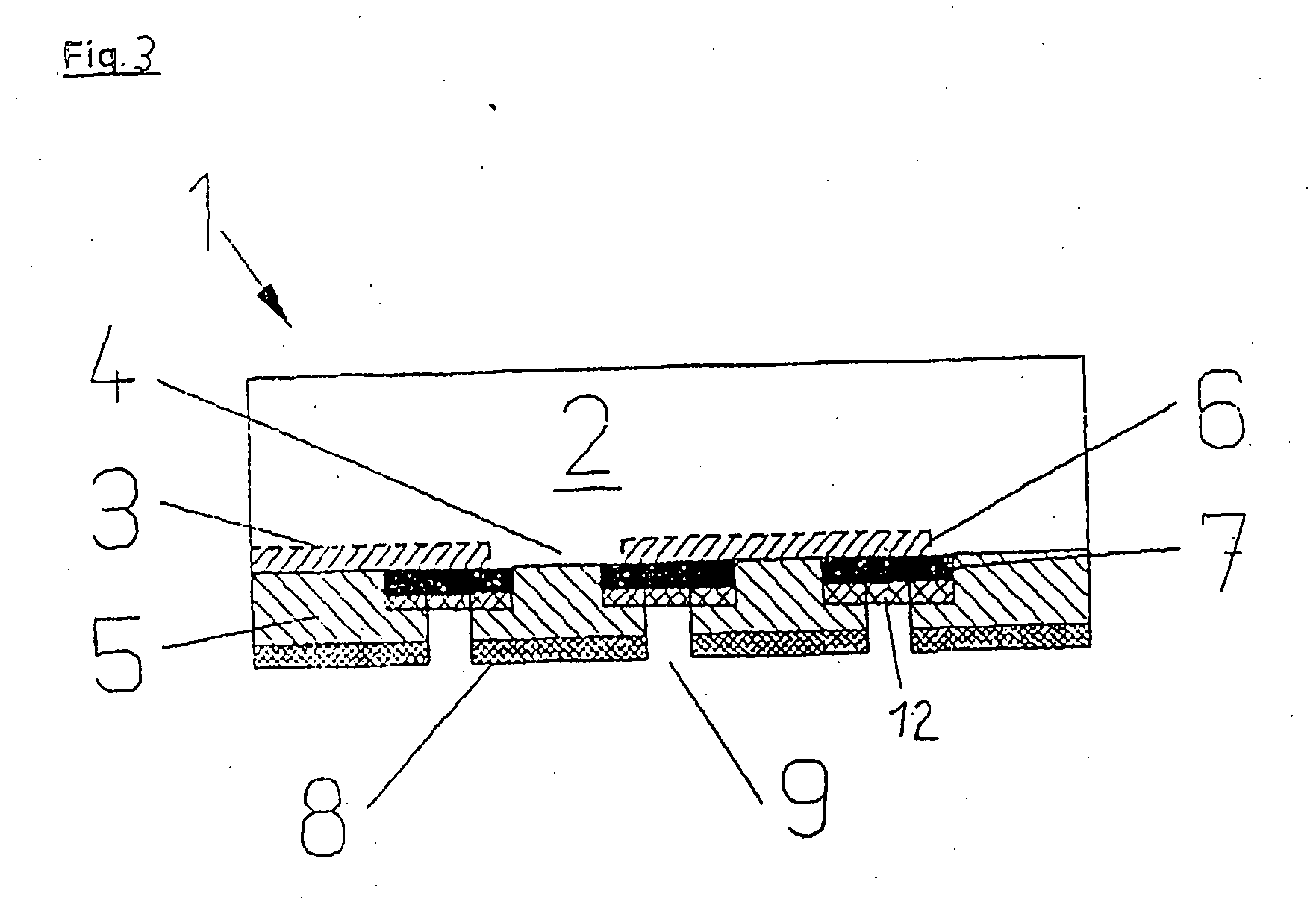Method for the Contact Separation of Electrically-Conducting Layers on the Back Contacts of Solar Cells and Corresponding Solar Cells
a technology of solar cells and electrically-conducting layers, which is applied in the direction of photovoltaic energy generation, electrical apparatus, basic electric elements, etc., can solve the problems of reducing the efficiency of the solar cell, requiring a plurality of aligning masking steps, and therefore elaborate conventional so-called back-contact solar cells, etc., and achieves the effect of easy production
- Summary
- Abstract
- Description
- Claims
- Application Information
AI Technical Summary
Benefits of technology
Problems solved by technology
Method used
Image
Examples
first embodiment
[0045]FIG. 1 shows a schematic sectional view of a solar cell according to the invention according to a
[0046]FIG. 2A to 2C schematically illustrate process steps of a process sequence according to the invention.
second embodiment
[0047]FIG. 3 shows a schematic sectional view of a solar cell according to the invention with separating trenches which are laterally offset with respect to a region boundary.
third embodiment
[0048]FIG. 4 shows a schematic view of a solar cell according to the invention in which the separating trench has a meander-shaped configuration.
PUM
 Login to View More
Login to View More Abstract
Description
Claims
Application Information
 Login to View More
Login to View More - R&D
- Intellectual Property
- Life Sciences
- Materials
- Tech Scout
- Unparalleled Data Quality
- Higher Quality Content
- 60% Fewer Hallucinations
Browse by: Latest US Patents, China's latest patents, Technical Efficacy Thesaurus, Application Domain, Technology Topic, Popular Technical Reports.
© 2025 PatSnap. All rights reserved.Legal|Privacy policy|Modern Slavery Act Transparency Statement|Sitemap|About US| Contact US: help@patsnap.com



